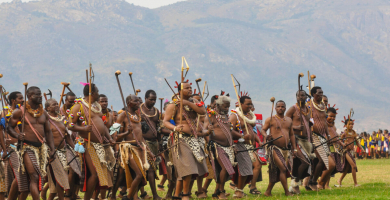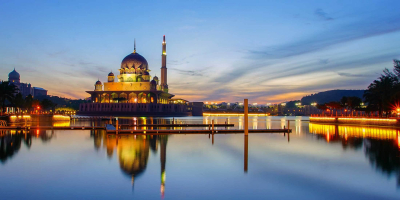Top 10 Thai Culture, Customs, and Etiquette
With its spectacular natural beauty, elaborate temples, hearty food, and the ruins of ancient kingdoms, Thailand, the gateway to Southeast Asia, attracts more ... read more...tourists than any other nation in the area. Thailand is a beautiful country known for its kind people and lush surroundings. Thailand has a lot to see, from the captivating and distinctive Thai culture to delectable cuisine, Buddhist temples, and vibrant night markets. Here are some things to know about the Thai Culture, Customs, and Etiquette.
-
Families nearly often come first in Thailand. Families in Thailand can consist of multiple generations living together. When you hear a Thai individual refer to several people as brothers and sisters, you might be astonished. These may be their relatives rather than their actual brothers and sisters. Since there is no term for cousins in Thai, cousins are referred to as brothers and sisters instead.
Another fascinating aspect of Thai society is how many people, even those who relocate for employment, nonetheless have close links to their hometown communities. It is not unusual to see kids raised by their grandparents or aunts and uncles when parents travel a lot for business. Younger family members are also expected to assist with caring for the elderly, either financially or with home duties (or sometimes both).
Understanding this exquisite Thai culture, several firms in this market have found success by using the family as their central theme for advertising. KFC is one such. In honor of Mother's Day, the fast food restaurant business that specializes in fried chicken gathered a lot of moms for private interviews to discuss what they want to tell their kids before presenting them with warm embraces from their own kids. Due to the popularity of this endearing ad, the renowned restaurant chain Bar-B-Q Plaza produced a similar Mother's Day follow-up commercial, which also garnered a lot of media attention.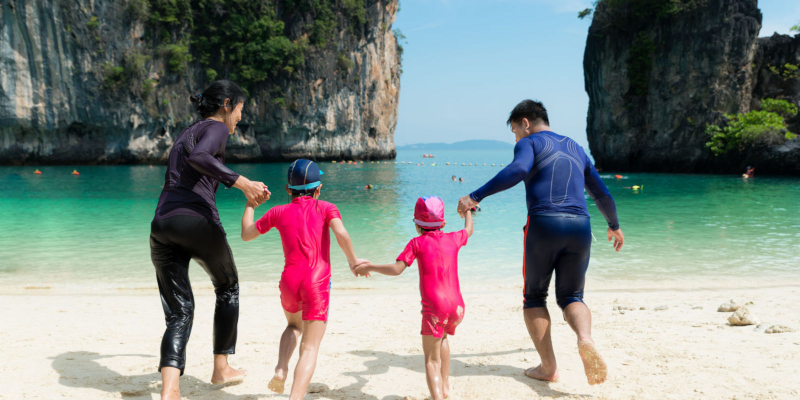
fanclubthailand.co.uk 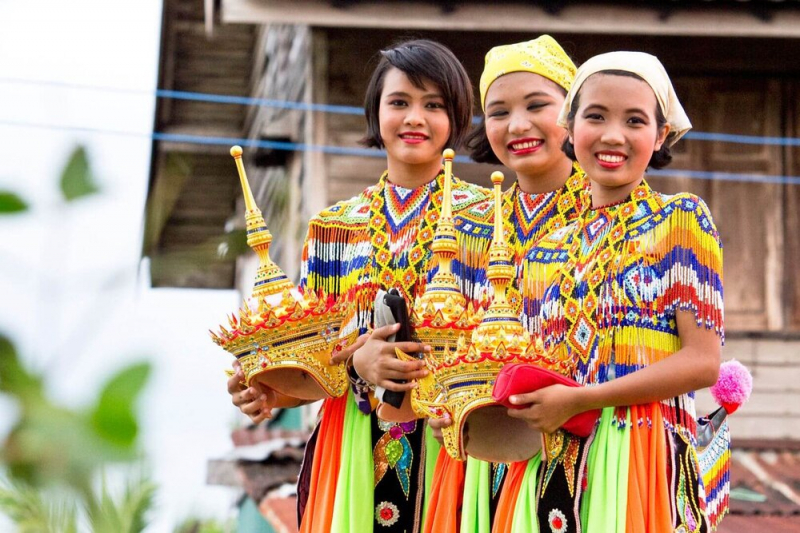
thislifeoftravel.com -
Another Thai culture, customs, and etiquette that you must bear in mind is Communication Styles. Thais regularly use indirect communication, particularly when talking about important issues or delicate subjects. Thai people frequently qualify their claims with phrases like "maybe" or "some individuals." You will frequently hear the Thai proverb mai bpen rai, which roughly translates as "no concerns" or "no difficulty," from Thai people.
Strong negative emotions are rarely displayed by Thais; wrath outbursts, temper tantrums, and public tears are uncommon. A Thai would constantly attempt to think about others before themselves since it is a fundamental component of their concept that showing unpleasant feelings makes people uncomfortable, which is why it is linked with "losing one's face."
This connects to a notion in Thailand known as the "middle road," which has Buddhist roots. It alludes to the idea that nothing should be said in a way that is "too negative" or "too positive." This is frequently interpreted by foreign businesses to suggest that Thai people don't get angry, take offense, or take things too seriously. If you wish to connect with the Thai audience, be careful not to mistake them for being fully carefree individuals (since on the inside, they frequently aren't), and be aware of your communication methods.
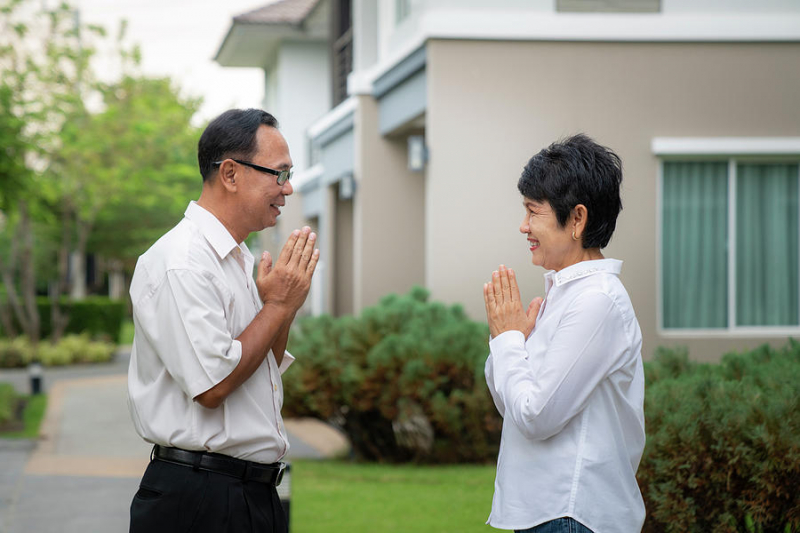
fineartamerica.com 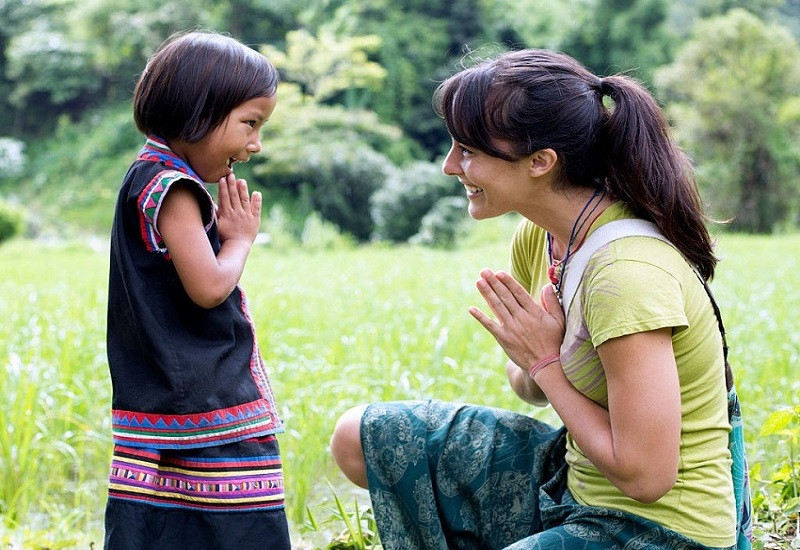
datviettour.com.vn -
Religion is also one of the Thai culture, customs, and etiquette that you should know before traveling to Thailand. Theravada Buddhism is practiced widely in Thailand. Thailand's religion differs from that of other Buddhist nations as a result of the infusion of several foreign components. Local ideas have been somewhat inspired by Hindu practices and traditional Chinese beliefs, but Thai Buddhism has been greatly influenced by animist beliefs, which have had a big impact on it. Islam is the second most widespread religion in Thailand, behind Christianity, which is thought to represent fewer than 1% of the country's population.
The syncretism of Buddhism with other religions is a significant aspect of the religion in Thailand. Buddhism is influenced by both Animism and Hinduism, at least as it is practiced in Thailand. Spirit homes are observable examples of Animism in Thai Buddhism that may be seen all around Thailand. Spirit houses are miniature model homes that frequently resemble Buddhist temples and are residences for the ghosts connected to a location. Thais frequently make allowances for any ghosts or spirits they may perceive to be nearby. To placate the spirits that were agitated during the construction of the house, Thai homes frequently contain spirit houses. Daily sacrifices of food and flowers are offered to these spirits.
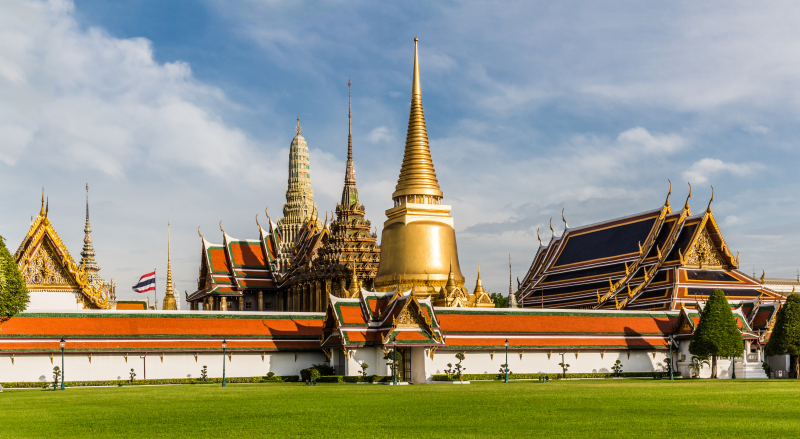
en.wikipedia.org 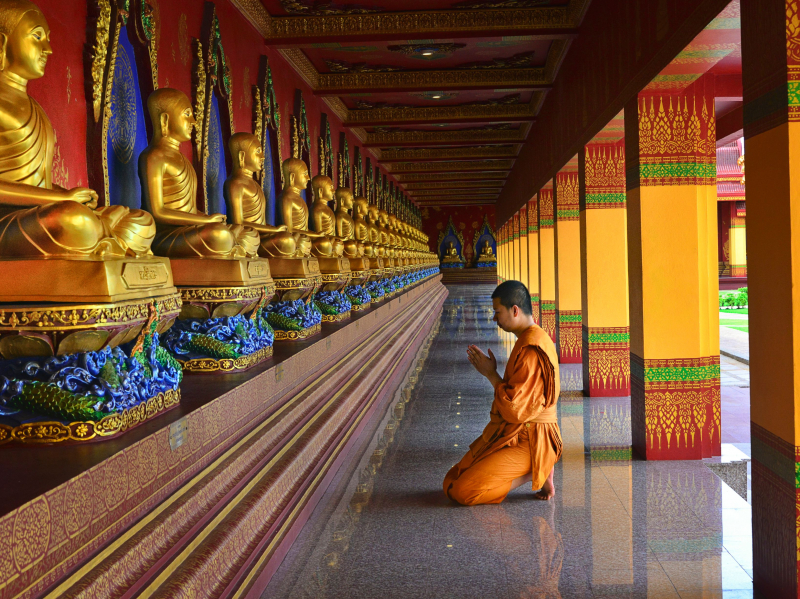
learnreligions.com -
Thailand is well known for its festivals and festivities, which are significantly influenced by traditional and cultural Thai values. Although many of them are based on regional customs and folklore, most Thai holidays are related to Buddhist and Brahman beliefs. Many have occurred during the course of a year for millennia.
Songkran is the biggest festival in Thailand and among the Thai culture, customs, and etiquette. This country-wide, gigantic water fight is a big part of the Thai New Year celebration! The custom has its start in the 13th century, when people would perform religious rites like sprinkling water on Buddha images to represent wiping away the negative deeds of the previous year and beginning over. Today, water is thrown at people in large buckets, so whether you're a foreigner or a Thai, you'll be wet. Chakkri Day, Chulalongkorn Day, the queen's and the current king's birthdays, Coronation Day, the Royal Plowing Ceremony, Visakha Bucha (Buddha's Birthday), Krathong (Festival of Lights), Magha Puja, Yi Peng Festival, and many others are also well-known Thai holidays and celebrations.
So what are these festivals' relationships with your company? They really do have a significant impact on your company's marketing plan in the Thai market. To increase sales during these holidays and celebrations, you may create specific marketing efforts. Still, you can just wish people well by posting on social media or sending emails to your Thai audience.
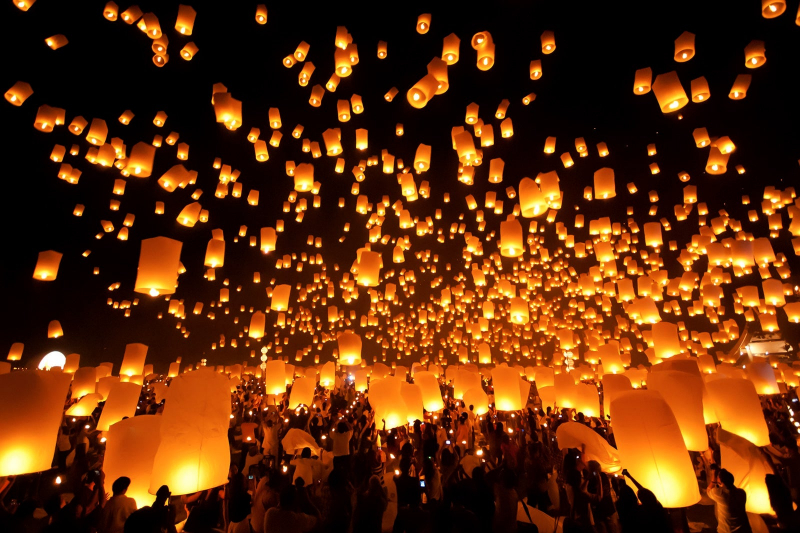
au.hotels.com 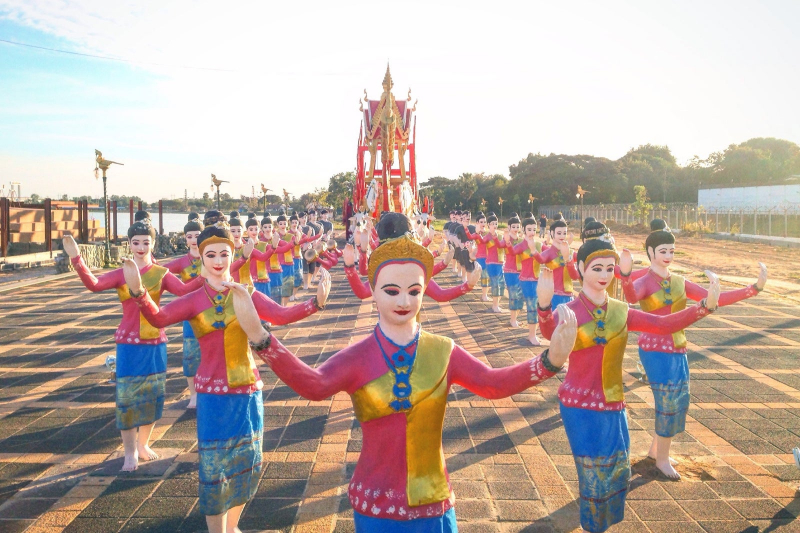
au.hotels.com -
The vast majority of Thai Chinese people speak Thai, also known as Central Thai, which is a Tai language belonging to the Kra-Dai language family. It is Thailand's sole official tongue. Out of the more than 60 languages spoken in Thailand, Thai has the greatest number of native speakers and total speakers. Pali, Sanskrit, Mon, and Old Khmer are the sources of more than half of its lexicon. Similar to Chinese and Vietnamese, it is a tonal, analytical language.
Thai has a sophisticated orthography and relational marker system. Depending on basic sociolinguistic variables including age, gender, class, geographic proximity, and urban/rural difference, spoken Thai can be somewhat understood by speakers of Lao, Isan, and some other Thai topolects. Although these languages have slightly distinct writing systems, they are linguistically related and collectively form a dialect continuum.
Since the middle to late Ayutthaya period, Thai has been widely adopted as a second language by the nation's minority ethnic groups despite being the dominant language in all spheres of life in Thailand. Nowadays, the majority of ethnic minorities speak Thai combined with their native tongue or dialect.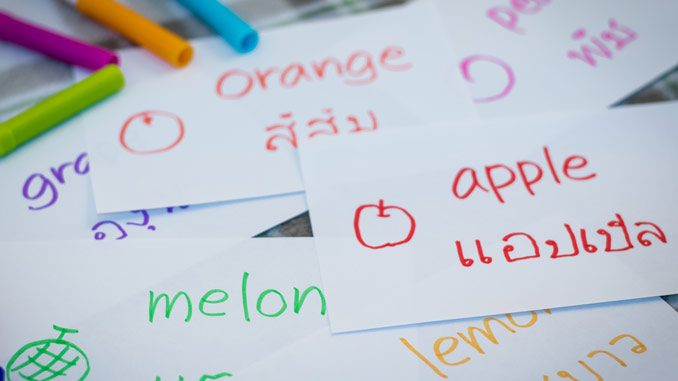
whitesandsthailand.com 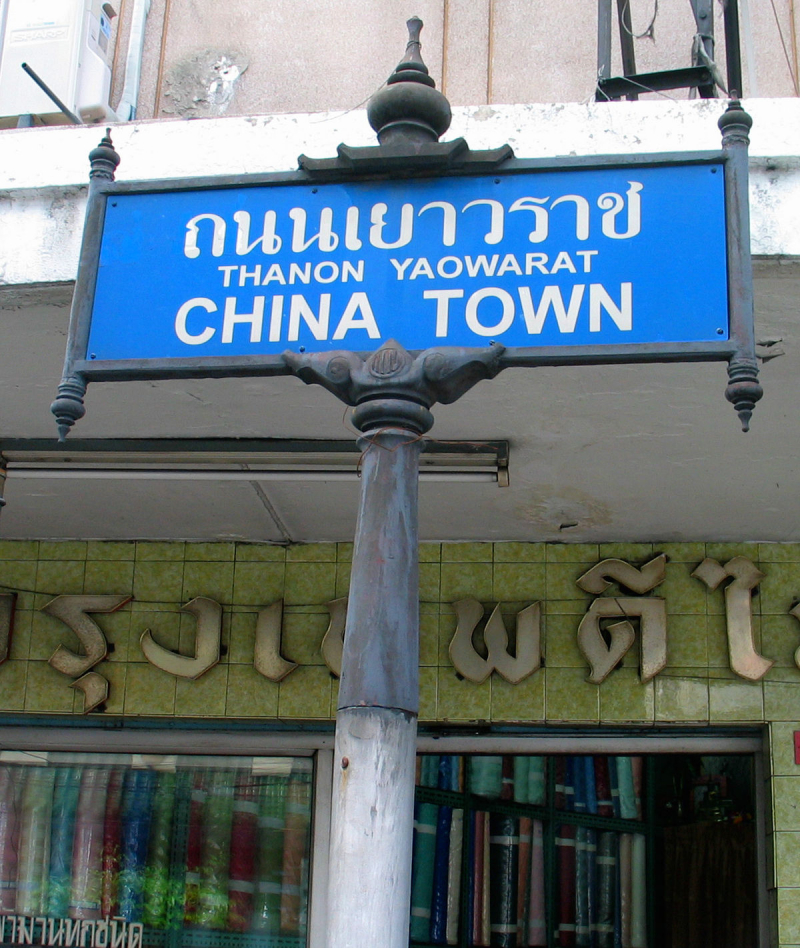
wikipedia.org -
The term "chut Thai" is sometimes shortened to "chut Thai," which is the full name of Thailand's national attire. The name translates to "Thai dress that has been supported by royalty." Chut Thai doesn't have a very extensive history, despite being the nation's official costume.
Numerous things used in the various styles of chut Thai have been worn by Thai people for a very long time. Chut Thai for ladies, however, did not become an official costume until the middle of the 20th century. Chut Thai was created by Queen Sirikit, the late King Bhumibol Adulyadej of Thailand's spouse. During official trips abroad, she came to the realization that Thailand required a contemporary national uniform for use in formal settings. Several designs were produced after extensive historical research on royal attire.
A group of royal tailors created the men's national dress in the late 1970s for the King to wear to formal events. For women, there are various varieties of chut Thai, each with its own styles, outfits, patterns, and accessories. While certain attire can be worn to any formal function, others are often more connected with specific occasions.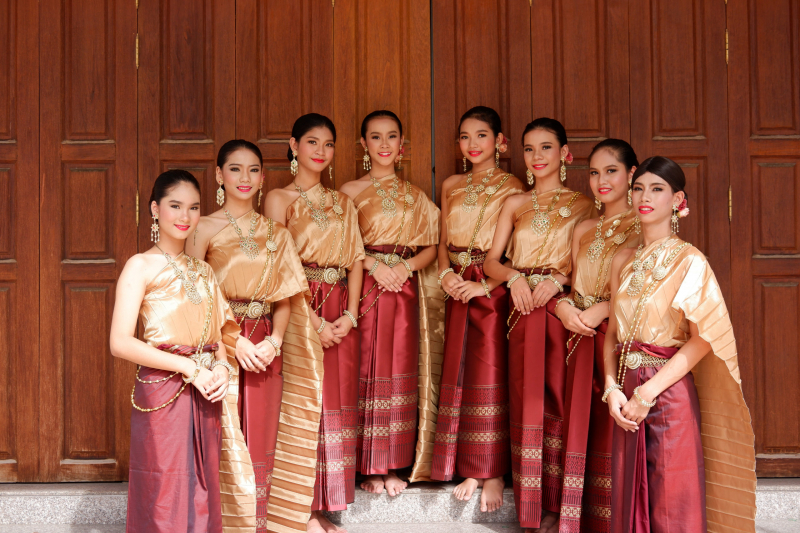
thailandinsider.com 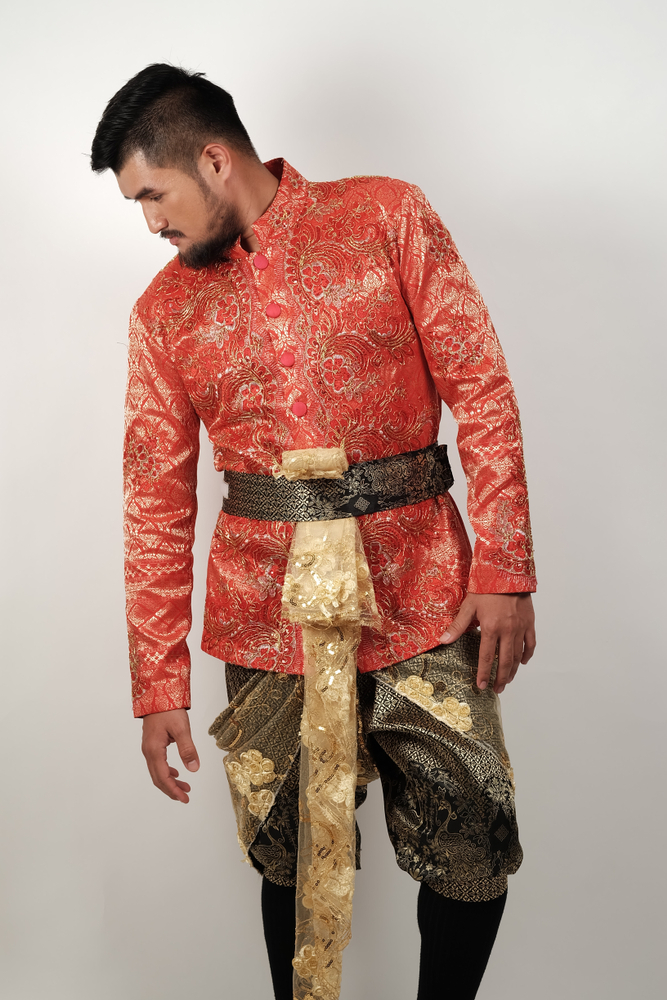
theculturetrip.com -
Sports hold a particular place in the hearts of the Thai people. Thai culture has a long history of sports, which is why it is so important to them. Thailand's contribution to martial arts is most recognized through its national sport, Muay Thai. As opposed to the typical four and two points of contact for western boxing, this kind of kick boxing uses eight points of contact, setting it apart from most kickboxing variations. One of the toughest martial arts styles—and one of the most thrilling to watch—is well acknowledged on a global scale.
Golf is becoming increasingly popular in Thailand as one of the more modern sports. It gained popularity in the 1990s and has now surpassed all other sports as the most popular in the nation. Because of this, finding a fantastic course in Thailand to improve your swing won't be difficult. It helps that the country has wonderful weather. Given Thailand's diverse geography, there are a variety of sports that one can participate in there, from aquatic sports to mountain biking.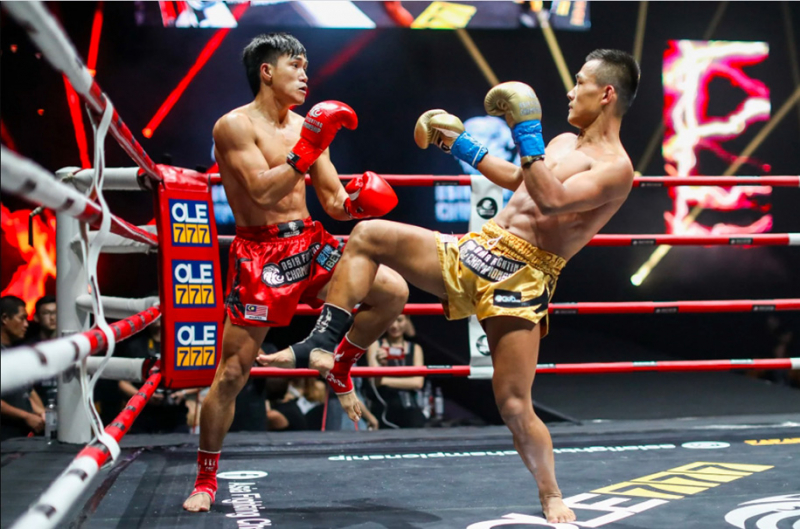
webthethao.vn 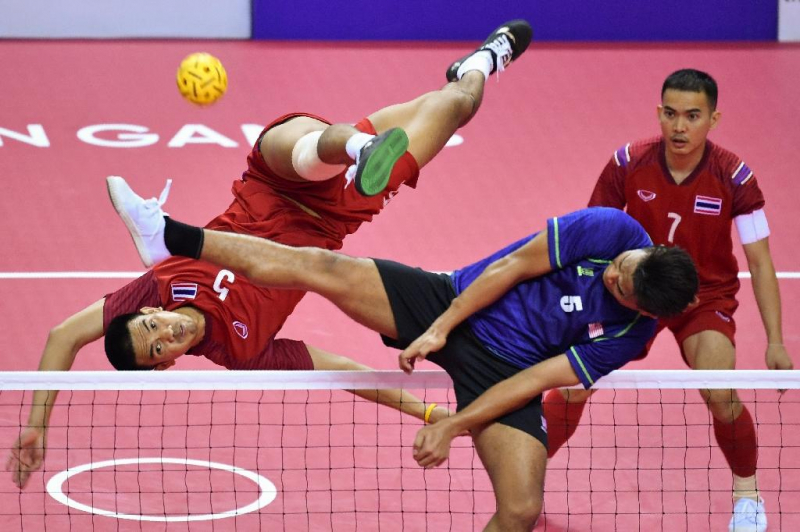
sports.yahoo.com -
The majority of Thai literature is produced in the Thai language and is the creation of the Thai people. Prior to the 19th century, poetry constituted the majority of Thai imaginative literature. Only historical accounts, chronicles, and legal papers were written in prose. As a result, the Thai language has a large number of sophisticated poetical forms. The body of pre-modern Thai poetry is substantial. Thailand still has a huge number of epic poems or lengthy poetic tales, some of which have original storylines and others of which have stories adapted from foreign sources, despite the fact that many literary works were destroyed with the fall of Ayutthaya in 1767.
Thus, there is a clear contrast between the literary traditions of Thailand and other East Asian countries like China and Japan, where epic poems are few and lengthy poetic narratives are more common. The literature of surrounding countries in mainland Southeast Asia, particularly Cambodia, Laos, and Burma, was greatly influenced by Thai classical literature.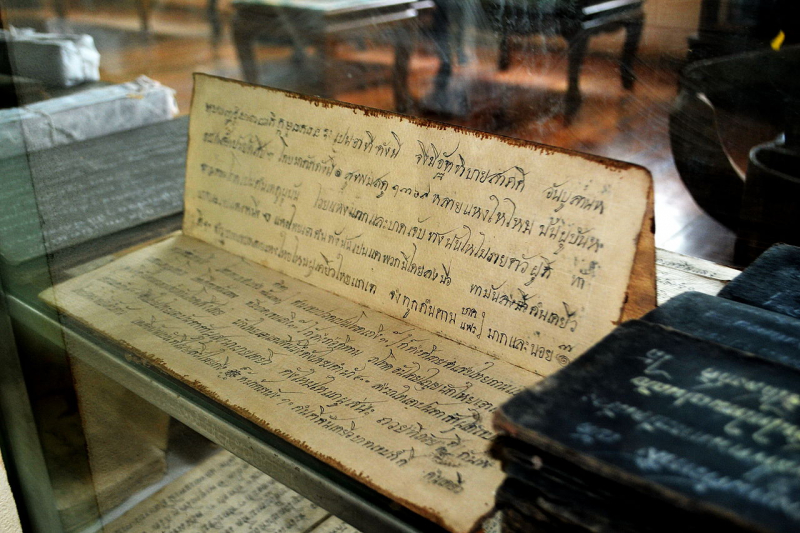
wikipedia.org 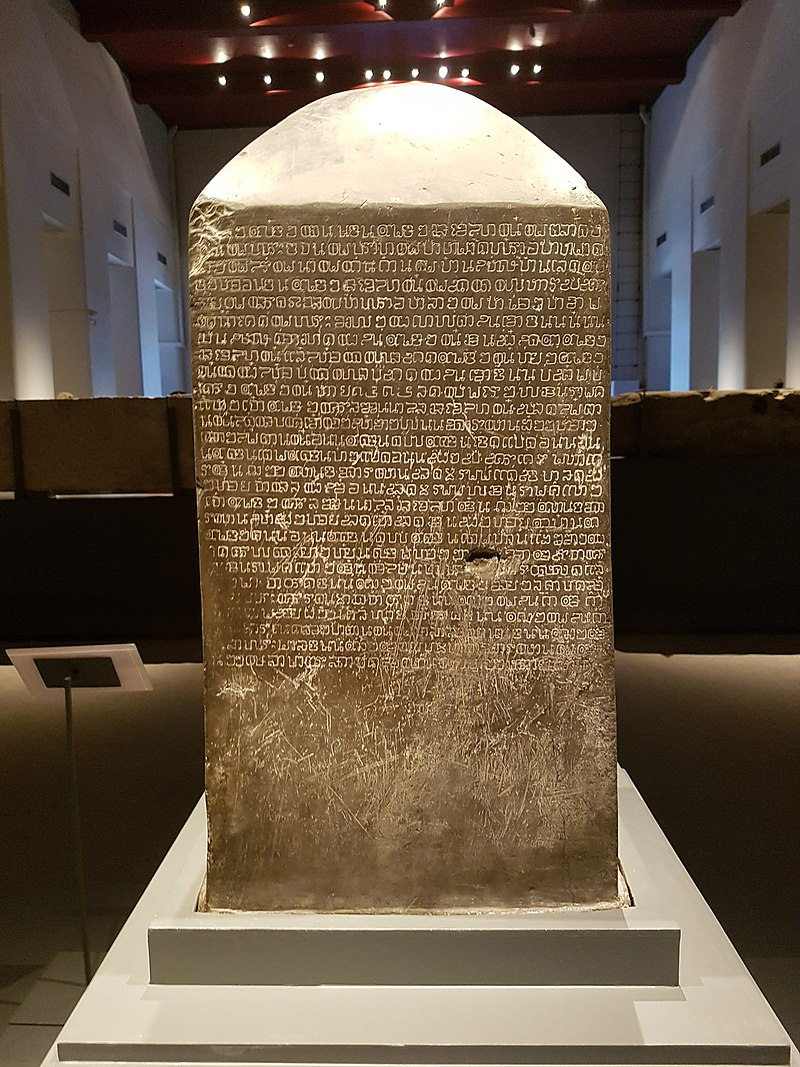
wikipedia.org -
Thailand is renowned for having skilled artisans and the best craftsmanship. Traditional values and the indigenous cultural identity have become less strong as time has gone and modernism has altered lives. The goal of Royal Thai Art is to once again showcase the very greatest Asian and Thai artworks.
Buddhist imagery and scenes from Indian epics are the two main influences on traditional Thai painting. Since traditional Thai sculpture is quite similar to other Southeast Asian art forms, including Khmer, it almost always includes representations of the Buddha. Typical subjects for traditional Thai paintings include book illustrations and painted details on palaces and temples. The indigenous civilizations of the Mon and Khmer had an impact on Thai art. Thai had already evolved into a distinctive style by the time of Sukothai and Ayutthaya, and it eventually came under the influence of other Asian forms, primarily Sri Lankan and Chinese. Thai sculpture and painting flourished, and the royal courts supported the building of temples and other religious structures as rewards for good deeds or to commemorate significant occasions.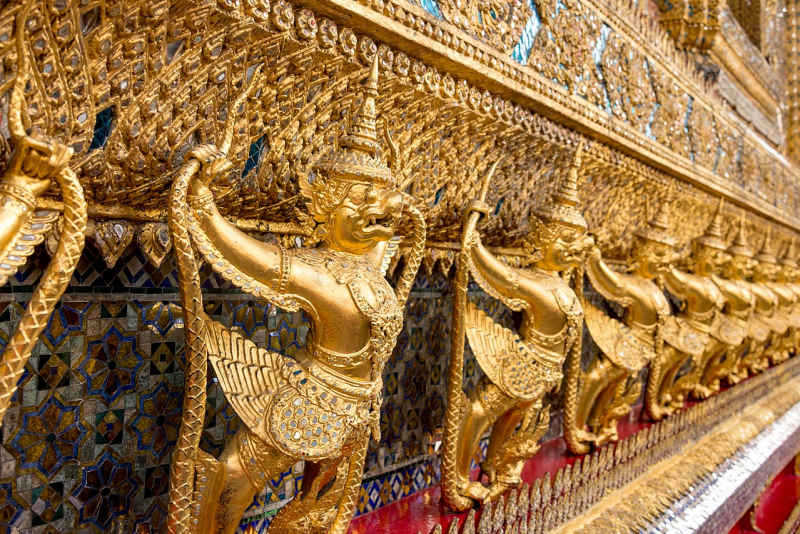
wikipedia.org 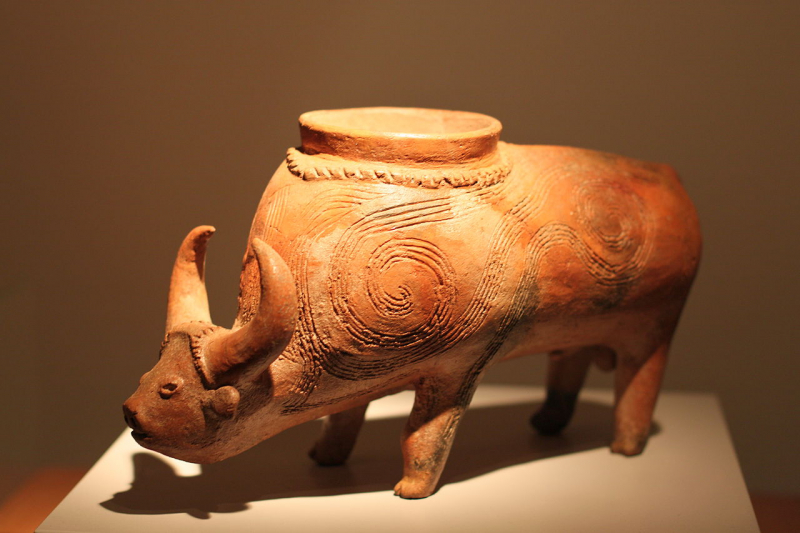
wikipedia.org -
Thailand continues to share cultural ties with the two major Asian civilizational hubs, China and India. Despite the fact that Western powers never invaded Thailand, pop music and other genres of European and American music have gained enormous popularity. Luk thung and mor lam, which have a lot of similarities to Lao music, are the two most well-known traditional music genres in Thailand. Aside from the majority of the Thai population, there are also small populations of Laotians, Lawa, Hmong, Akha, Mien, Lisu, Karen, and Lahu peoples.
The Thai people have a long history of creating their own musical instruments and adapting other people's designs for their own purposes. In reality, there are a number of musical instruments that the Thai people are believed to have invented before they encountered Indian culture, which was already well-established in Southeast Asia before the Indian people went there. Later, as the Thai people were creating their kingdoms, they integrated this musical culture into their own when they came into contact with Indian culture, notably with Indian instruments that the Mon and Khmer civilizations had initially adopted.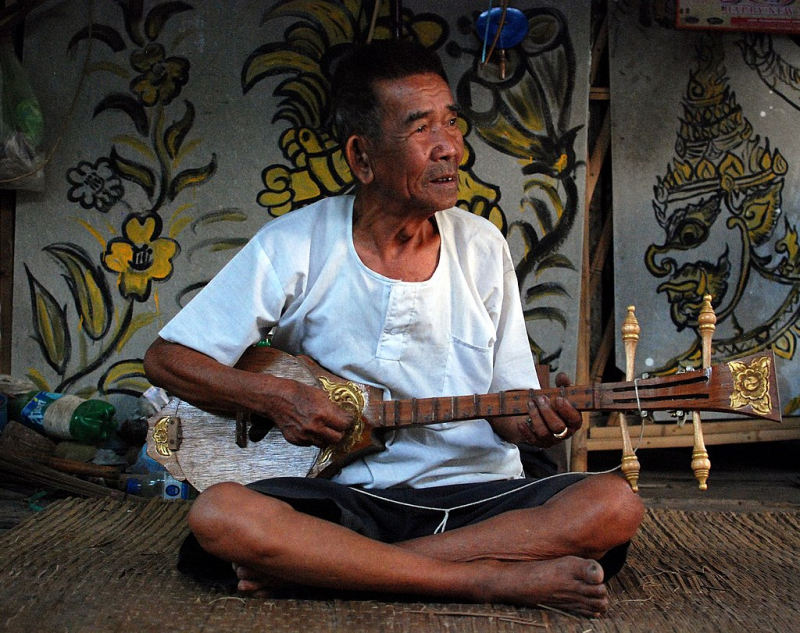
wikipedia.org 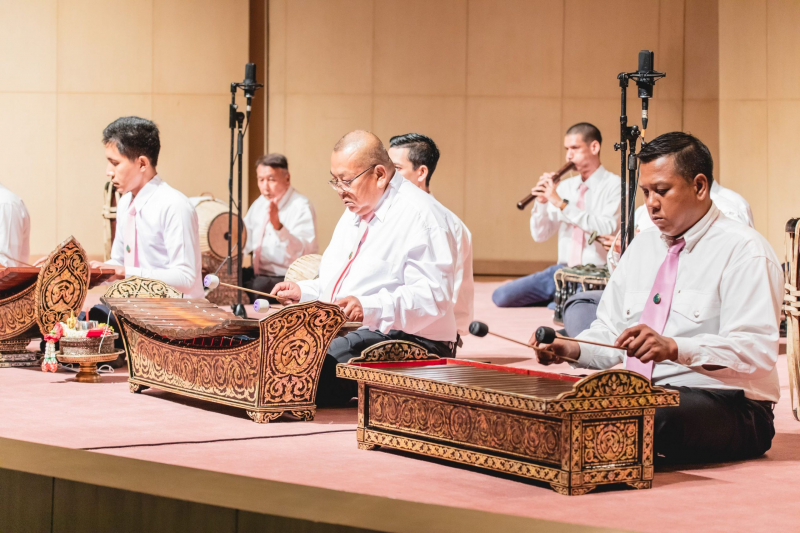
cuartculture.chula.ac.th






























